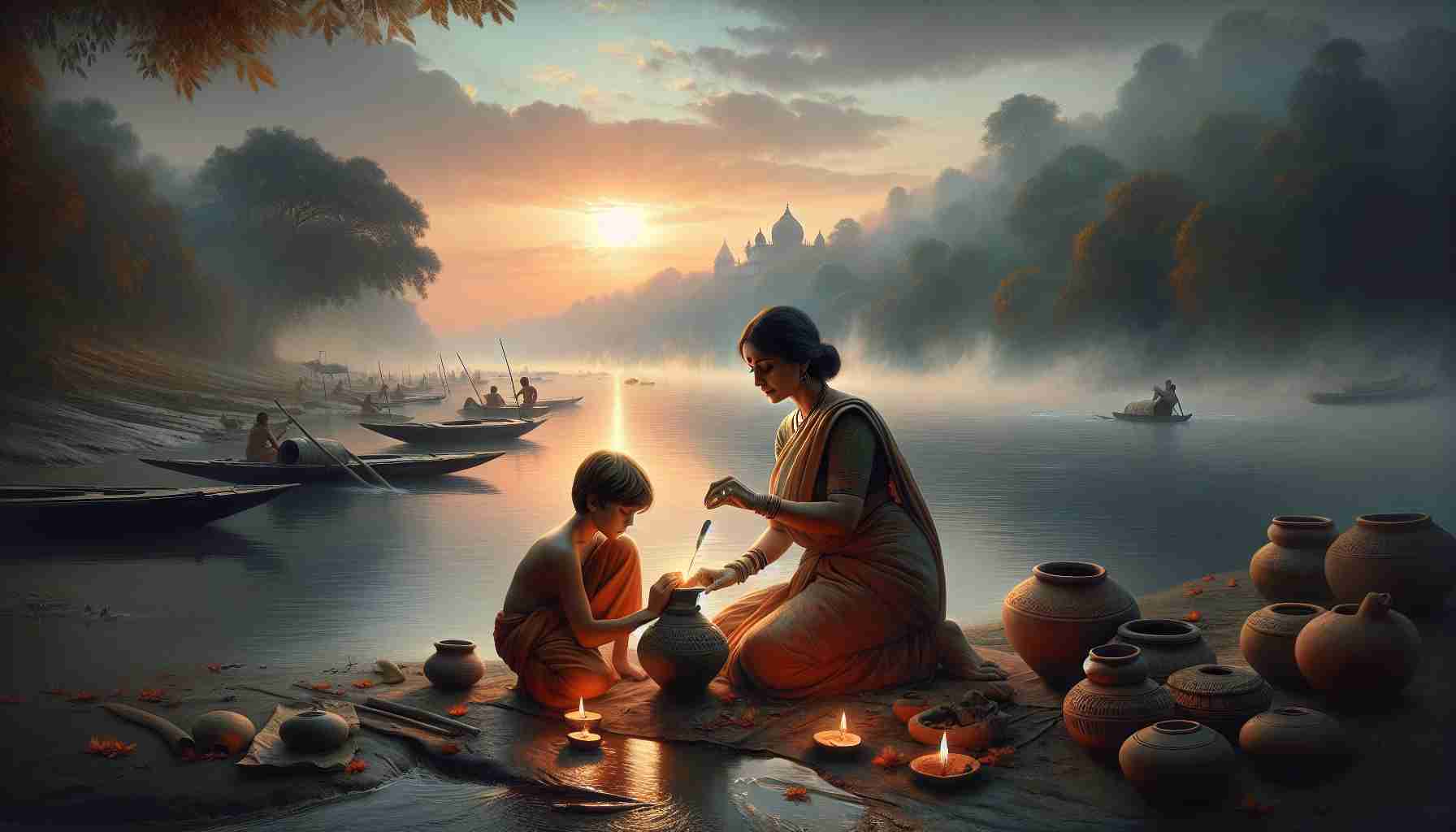

I am Saanvi, a ceramic artist living by the banks of the Ganga — our sacred river. Some mornings, when the mist rises off the water and the first diya floats by, I forget to doubt myself. But last spring, there was a stretch when all I could feel was doubt.
Every pot I shaped felt imperfect. My hands, once steady, hesitated over the clay. I questioned everything — not just my work, but my entire path. Was this the right way? Was I doing enough? Giving enough? Living as dharmically as I believed?
My friends had taken safer roads — IT jobs, marriages with large ceremonies, bank balances that didn’t teeter. I had taken the quieter road, shaped by prayer, simplicity, and the discipline of my craft. But even the Gita says in Chapter 4, Verse 13: “Catur-varnyam maya srstam guna-karma-vibhagasah” — the duties are shaped by our nature and actions. Still, I couldn’t help but wonder if I had misunderstood my own.
It came to a head one evening when I was walking home from the evening arati. I saw a small boy outside the temple trying to fix a broken clay diya with his tiny fingers. His brow furrowed, tongue poking out, he pressed it together with such care. I was about to walk past. But something — maybe the echo of “Sarva-bhūta-hite ratāḥ” from the Upanishads, which means “those who delight in the welfare of all beings” — made me pause.
I knelt beside him.
“Did it break?” I asked.
He nodded sadly, then looked up and said, “But it’s still good. I can still use it. Light will come.”
His voice was so small, so sure. Just like that, something rearranged itself in me.
To that child, the diya wasn't ruined — it was still worthy of carrying light. Just as I was, despite all the cracks I thought I had.
I offered to help him fix it, using a little wet clay from my satchel. He grinned — a smile so full it seemed to light the air around us. In that moment, I felt what the Mahabharata says through Bhishma: “Dharma is subtle.” It's not always a loud voice or a burning sign. Sometimes it's a quiet reassurance, like a child believing in light.
That night, I worked again. The wheel spun under my hands, the earth breathing with me. The clay did not resist.
From then, whenever doubt returned, I remembered that child’s words. “It’s still good. Light will come.”
As the Bhagavad Gita reminds in 2:47: “You have a right to perform your prescribed duties, but not the fruits thereof.”
My dharma was never about perfection. It was about faithfulness.
Even now, as I sit watching the Ganga carry countless diyas — glowing, cracked, or whole — I feel it gently: Dharma walks beside us softly… reminding us, we’re still on the path.
I am Saanvi, a ceramic artist living by the banks of the Ganga — our sacred river. Some mornings, when the mist rises off the water and the first diya floats by, I forget to doubt myself. But last spring, there was a stretch when all I could feel was doubt.
Every pot I shaped felt imperfect. My hands, once steady, hesitated over the clay. I questioned everything — not just my work, but my entire path. Was this the right way? Was I doing enough? Giving enough? Living as dharmically as I believed?
My friends had taken safer roads — IT jobs, marriages with large ceremonies, bank balances that didn’t teeter. I had taken the quieter road, shaped by prayer, simplicity, and the discipline of my craft. But even the Gita says in Chapter 4, Verse 13: “Catur-varnyam maya srstam guna-karma-vibhagasah” — the duties are shaped by our nature and actions. Still, I couldn’t help but wonder if I had misunderstood my own.
It came to a head one evening when I was walking home from the evening arati. I saw a small boy outside the temple trying to fix a broken clay diya with his tiny fingers. His brow furrowed, tongue poking out, he pressed it together with such care. I was about to walk past. But something — maybe the echo of “Sarva-bhūta-hite ratāḥ” from the Upanishads, which means “those who delight in the welfare of all beings” — made me pause.
I knelt beside him.
“Did it break?” I asked.
He nodded sadly, then looked up and said, “But it’s still good. I can still use it. Light will come.”
His voice was so small, so sure. Just like that, something rearranged itself in me.
To that child, the diya wasn't ruined — it was still worthy of carrying light. Just as I was, despite all the cracks I thought I had.
I offered to help him fix it, using a little wet clay from my satchel. He grinned — a smile so full it seemed to light the air around us. In that moment, I felt what the Mahabharata says through Bhishma: “Dharma is subtle.” It's not always a loud voice or a burning sign. Sometimes it's a quiet reassurance, like a child believing in light.
That night, I worked again. The wheel spun under my hands, the earth breathing with me. The clay did not resist.
From then, whenever doubt returned, I remembered that child’s words. “It’s still good. Light will come.”
As the Bhagavad Gita reminds in 2:47: “You have a right to perform your prescribed duties, but not the fruits thereof.”
My dharma was never about perfection. It was about faithfulness.
Even now, as I sit watching the Ganga carry countless diyas — glowing, cracked, or whole — I feel it gently: Dharma walks beside us softly… reminding us, we’re still on the path.